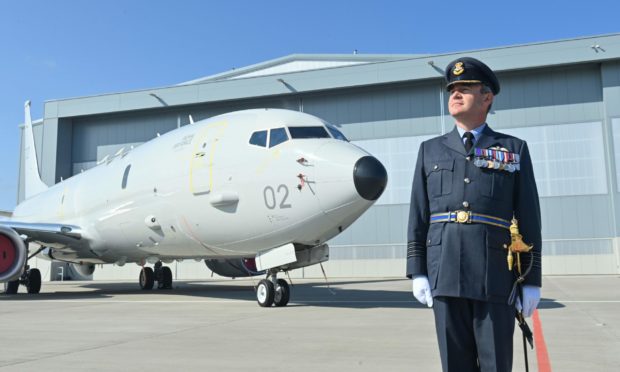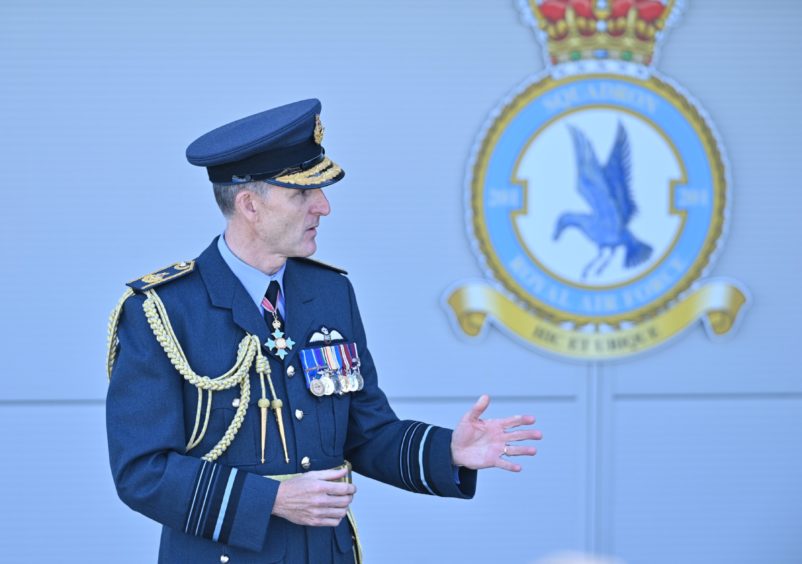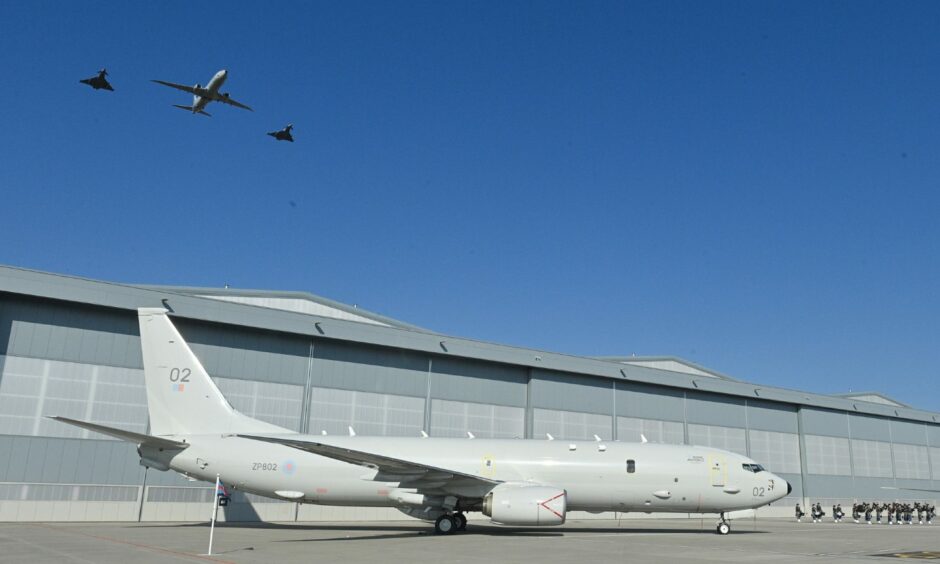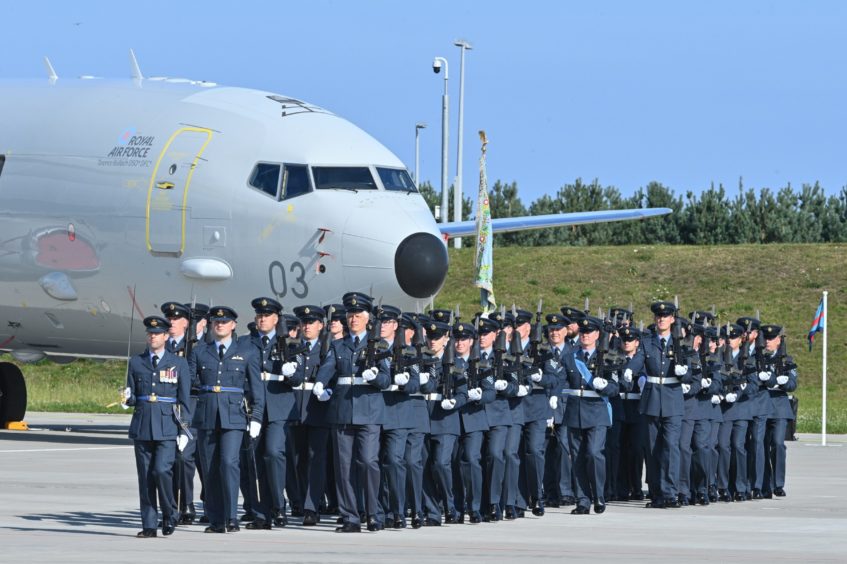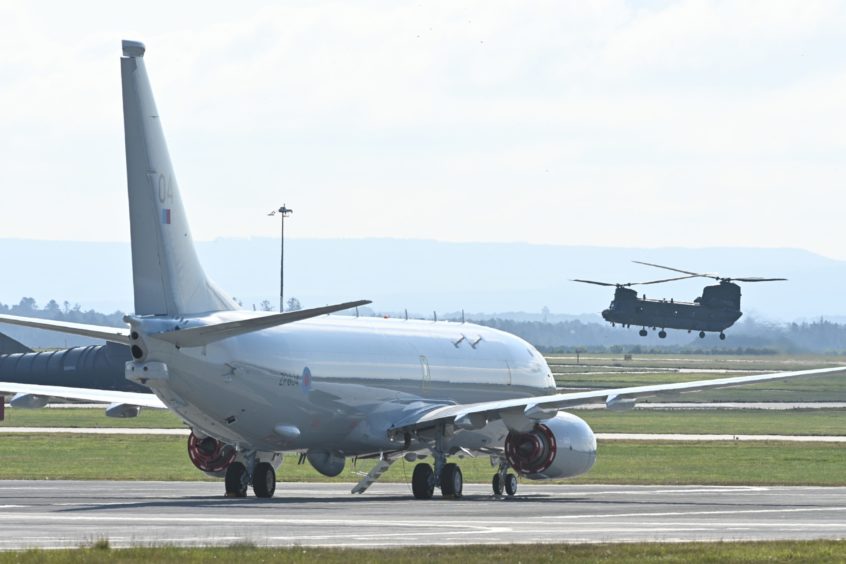The RAF Lossiemouth HQ for its fleet of submarine-hunting spy planes has been christened the Atlantic Building to reflect the current threats the base is on the frontline of.
Eventually nine P-8 Poseidon aircraft will operate from the Moray coast, tasked with securing the seas from threats lurking beneath the waves.
And the stirring name of the massive headquarters, which can house three of the huge planes at once, has been chosen to reflect the history and future of the mission.
The ocean was the scene of submarine warfare in World War II.
And it remains “contested” to this day with the UK and Nato allies engaged in a game of cat-and-mouse with Russian forces.
The Atlantic battle
The Ministry of Defence ordered the Poseidon fleet in 2016 to respond to the increasing threat in the Atlantic, with the first arriving at RAF Lossiemouth three years later.
Defence Secretary Ben Wallace warned in May this year that Russian submarines are circling the entire coastline of Britain.
Today, Air Marshal Gerry Mayhew, the RAF’s deputy commander of operations, visited RAF Lossiemouth to unveil the christening plaque of the Atlantic Building.
He explained the name was a “true reflection” of where threats had historically come from as well as where they are currently engaged in operations.
Wing Commander James Hanson, who is now departing as officer commanding the Poseidon CXX Squadron since leading it from its reestablishment in 2018, joining when there was just one other person while using “borrowed furniture and borrowed computers”, explained the threats from overseas were very real.
He said: “The North Atlantic is a contested environment, being an island nation our oceans and seas are hugely important to the nation.
“Even if it’s for something mundane like food supplies or oil and gas supplies, our ability with the Royal Navy to secure these seas with aircraft, submarines and ships has really taken the nation forward in terms of maritime security.”
Group Captain Chris Layden, station commander of RAF Lossiemouth, said: “The squadron is already making a pretty significant impact in the Atlantic.
“There are bits I can’t talk about, but they are there, they are real and they are vital.”
What impact has the Poseidon fleet made?
Honour for CXX Squadron
CXX Squadron went on parade at RAF Lossiemouth on Wednesday as the personnel were rewarded with a new standard for the work they are already doing.
Such ceremonies are usually only held after 25 years of continuous service, and then every 25 years thereafter.
However, the landmark has been brought forward to mark the beginning of a new chapter in the history of the squadron, which led anti-submarine warfare in the Second World War and most recently in Iraq and Afghanistan until it was disbanded in 2011 for seven years.
Gp Capt Layden said: “I think for the personnel it’s a thrill to be able to parade in front of their friends and families who have played such a great part in the journey they have been on together.”
RAF Lossiemouth continuing to build
Another four Poseidon aircraft are due to arrive at RAF Lossiemouth by spring next year – taking the fleet to nine.
Meanwhile, a fleet of Wedgetail surveillance aircraft will also land at the Moray base from 2023.
Wing Commander Ben Livesey, the incoming officer commanding CXX Squadron, explained the technology on the Poseidon fleet now is far more advanced than on the Nimrod he used to fly on from nearby RAF Kinloss.
He said: “It’s quite a step, we were using a 1960s jet with 80s technology and we could bleed an awful lot more from it.
“I was like a kid in a sweet shop during training hearing about different things every day and thinking we could use it for this and this and this.
“The challenge at the moment is to rein myself in and focus on routine things.”
Scottish Secretary Alister Jack described the base at Lossiemouth as a “crucial facility” and said: “The fleet of Poseidon submarine hunting aircraft based here are vital to maintaining the security of the UK and our NATO allies by providing constant vigilance to threats on and under the sea and protecting the UK’s nuclear deterrent.
“The Atlantic Building – part of a £360m investment in the air base, creating and supporting hundreds of jobs locally – demonstrates powerfully how important defence is to Scotland and how important Scotland is to the defence of the UK and Nato.”
